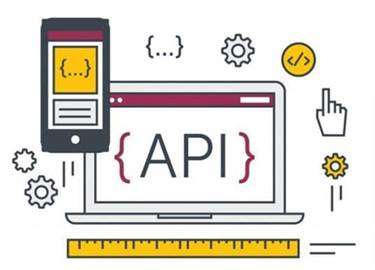Over time, technology creates new jobs like mobile application developers, social media and business intelligence analysts, information security specialists, and data architects. Information technologies that integrate business functions across the enterprise, known as Enterprise Systems, have become the backbone of modern organizations. You can see everything in one place — a simple, customizable dashboard that can tell you a customer’s previous history with you, the status of their orders, any outstanding customer service issues, and more. You can even choose to include information from their public social media activity — their likes and dislikes, what they are saying and sharing about you or your competitors.
Enterprise software is expanding its scope to link the enterprise with suppliers, business partners and customers. Enterprise software, or enterprise application software, is computer software used by organizations rather than individual users. Common types of enterprise software include contact centre software, business intelligence, enterprise communication, inventory management, marketing tools, online payments, and enterprise resource planning.
Customer Relationship Management
Enterprise asset management (EAM) software helps you keep track of all the physical assets that your company owns. Taking the time to inventory and manage these investments can help you extend their lifespan. When all your customer data is in one place, customer service levels improve, along with retention rates. You can use customer data to create tailored content, delivering personalized messages that motivate your customers on a deeper level than generic appeals. If your organization is tasked with consolidating and coordinating financial data across different departments, offices and location, this software can offer a consistent, automated approach.
Built for the digital age, today’s ERP cloud embraces mobile, social, analytics, and the latest emerging technologies. Cloud-based ERP applications are often embedded with next-generation technologies, such as the internet of things (IoT), blockchain, AI, machine learning, and digital assistants. Systems programmers and IT managers must determine when newer versions of operating systems make sense and types of enterprise software plan how to integrate them into existing environments. In such cases, the software may need to be customized to satisfy the requirements of the organizations. This may not only deteriorate the system’s performance but also need compromising the information and process integration. Enterprise governancegovernance involves shaping the political, operational, economic, and technical (POET) landscape.
Next steps with enterprise software on AWS
With the right enterprise software, a business can optimize workflows, increase productivity and build its bottom line. With information about existing and potential clients in one place, businesses can personalize their communications and build deeper relationships. They can also bring together data from different departments to build out their sales pipelines and make financial forecasts. ERP software also provides total visibility, allowing management to access real-time data for decision-making. Your customers may be contacting you on a range of different platforms — including phone, email, or social media — asking questions, following up on orders, or contacting you about an issue.

More than 5,000 SAP customers run their workloads using SAP on AWS, a collection of several tools and services to build robust, reliable, and scalable SAP systems on AWS infrastructure across the world. ERP systems usually fail to achieve the objectives that influenced their installation because of a company’s reluctance to abandon old working processes. Some companies may also be reluctant to let go of old software that worked well in the past.
Enterprise Asset Management
Like all software, a database management system (DBMS) must support the hardware platform and operating system it runs in. In order to move a DBMS to another platform, a version must be available for the new hardware and operating system. ERP transformed the technology sector by serving a broader range of industries and by combining MRP II, human resources, project accounting, and end-user reporting. Many companies are modernizing and upgrading their on-premise ERP systems to cloud deployments. This requires careful planning of your ERP upgrade as well as a thoughtful process of evaluating ERP software and deployment options.
The Power of the Industrial Metaverse – Insights – Siemens
The Power of the Industrial Metaverse – Insights.
Posted: Tue, 26 Sep 2023 14:00:35 GMT [source]
Managing the information systems in a large company is a huge task that is performed by many people. For companies that want a mixture of both to meet their business requirements, there is the hybrid cloud ERP model. This is where some of your ERP applications and data will be in the cloud and some on premise. ERP systems also support industry-specific requirements, either as part of the system’s core functionality or through application extensions that seamlessly integrate with the suite. As your company brainstorms new offerings, product lifecycle management (PLM) software can help you organize these efforts. AWS is currently officially collaborating with SAP and Oracle so companies can run SAP and Oracle software on AWS.
ERP Solutions Providers
Clients receive 24/7 access to proven management and technology research, expert advice, benchmarks, diagnostics and more. They can also oversee manufacturing, materials ordering, distribution and other key steps. The most dynamic BI software includes visualization tools and customizable dashboards that allow you to easily adjust the data you’re viewing. This software also includes built-in templated reports for creating forecasts and projections. Cadbury, a global confectioner and maker of the popular chocolate Cadbury egg, also successfully implemented an ERP system.
- Our expert industry analysis and practical solutions help you make better buying decisions and get more from technology.
- From paper cards to mobile devices
The history of ERP goes back more than 100 years. - It helps managers better understand how efficient their work is, and adjust it accordingly.
- Enterprise software systems are computer programs used by organizations to streamline their internal and external processes, data, reports and analytics flows.
- This also means that if less IT capabilities are needed for any reason, those same services can be scaled down.
- Many companies are modernizing and upgrading their on-premise ERP systems to cloud deployments.
Hear how the NBA is supporting the growth of their company and smoother operations with SAP S/4HANA Cloud. This is the traditional model for deploying software where you control everything. The ERP software is typically installed in your data center at the locations of your choice. The installation and maintenance of the hardware and software is your staff’s responsibility. ERP software can be bought using a cloud subscription model (software-as-a-service) or a licensing model (on premise). The ultimate goal of a Programme is to realise outcomes and benefits of strategic relevance.
ERP history: The rapid evolution of ERP
Companies can pick and choose the module they want and can add on and scale as needed. Sometimes described as “the central nervous system of an enterprise,” an ERP software system provides the automation, integration, and intelligence that is essential to efficiently run all day-to-day business operations. Most or all of an organization’s data should reside in the ERP system to provide a single source of truth across the business.

From paper cards to mobile devices
The history of ERP goes back more than 100 years. In 1913, engineer Ford Whitman Harris developed what became known as the economic order quantity (EOQ) model, a paper-based manufacturing system for production scheduling. Toolmaker Black and Decker changed the game in 1964 when it became the first company to adopt a material requirements planning (MRP) solution that combined EOQ concepts with a mainframe computer. ERP also ensures that these data fields and attributes roll up to the correct account in the company’s general ledger so that all costs are properly tracked and represented. See how industry analysts compare Oracle Cloud ERP against other financial management software providers. The cloud provides an ideal environment for ERP as it is an accessible, reliable, secure, and highly scalable platform for mission-critical software.
About Salesforce
Still, it’s well worth your time because understanding what’s out there is the first step toward making an informed software selection. Even though companies are making deeper investments in data and analytics than ever before, many companies still lack the intelligent insights they need. Managers can use these insights to learn more about employee performance, timeliness, productivity and more. They can also discern when employees are most needed, which can aid in shift scheduling. Long heralded as an ideal solution for large businesses, the ERP realm has recently expanded to support small-to-midsized (SMB) businesses, as well.
